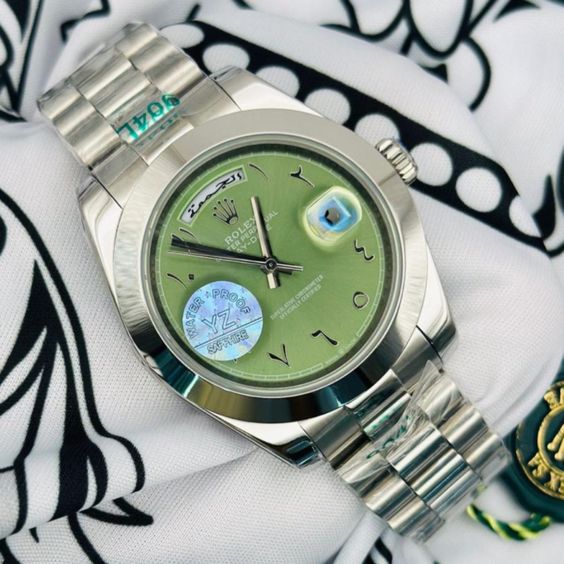In the field of horology, where precision, handiwork, and honour are everything, there exists a parallel universe that thrives on mimicry and imitation: replica watches’ world. The emergence of look-alike timepieces that bear striking resemblance to luxury watches but are cheaper marked an interesting chapter in the history of watchmaking. In this article, we will delve into how copy watches in dubai started and changed the wrist watch industry.
Early Beginnings: The Birth of Imitation
It is not news that imitation has been part of watch making for quite some time now. Replicas have their beginnings in the late 19th and early 20th centuries when mass production technology for watches became accessible. By this time Swiss watchmakers had gained global recognition for quality craftsmanship and luxuriousness. Thus as Swiss watches were becoming symbols of classiness and status so were demands for affordable alternatives.
The earliest replicas were shoddy copies made using less precision and lower grade materials. At first these imitations served markets where high-end watches were too dear to afford. They were still not great threats to established watch brands but they mostly laid down the foundation for sophisticated replicas that followed them.
The Rise of the Replica Market
Realistically speaking, replica watches took a turn during the last half of the 20th century due to technological advancements in manufacturing processes. This period witnessed growth in production of high-quality replica watches particularly between 1980s-1990s because people from all over the world required luxury products without spending much money on them.
At this stage, replicas began looking more like genuine luxury models outwardly as well as offering similar functionalities. Capability to produce intricate designs together with complex mechanisms appealed to a larger audience towards buying such products. Advanced materials and techniques employed allowed manufacturers of replicas to amend their pieces almost beyond recognition from originals which signalled “Replica Revolution” meaning that copy-watches recognized within themselves as distinct entities began appearing in prominence.
Legal and Ethical Implications
Controversies have surrounded the proliferation of replica watches. The legal as well as ethical implications of producing and buying counterfeit timepieces are still subject to debates. Luxury watch companies have always condemned counterfeiting by claiming that imitations encroach upon their intellectual property rights thus denting their brand image.
With this, many countries have tightened anti-counterfeit legislation. Also, watch makers have taken various steps towards curbing the spread of replicas including use of sophisticated authentication techniques in addition to teaming up with police for cracking down on counterfeit operations.
However, the market for replica watches has remained resilient despite these measures. For a majority of consumers the aesthetic appeal of having an imitation watch that bears close resemblance to a high-end one but is much cheaper overrides morality and legality issues involved. This ongoing tension points to intricate interplay among innovation, mimicry and patents within the luxury product sphere.
The Influence on the Watch Industry
The rising of fake watches has had a seminal effect on the watch industry. Firstly, it has necessitated luxury timepiece manufacturers to become more innovative as well as set themselves apart. Many brands have spent heavily in research and development to counter replicas by making technology and designs that are hard to copy.
However, the presence of high-end replicas has also helped educate consumers about watches. The more knowledgeable the consumer is about things like intricate details of horology; it will enable them in deciding what they want to buy. This has created a market where authenticity and skillful workmanship matter.
Additionally, this illustrates a debate on luxury and how people can now have access to these products. The issue of whether or not replicas undermine the exclusivity of luxury brands or open up opportunities for everyone remains central in this field.
Future of Replica Watches
In the days ahead, replication watches’ future is anticipated to be shaped by ongoing technological advancements and changes in consumer taste. As technology keeps advancing, there may be little difference between authentic and replica watches. Today’s 3D printing spree could boost even further quality reproduction.
Simultaneously, manufacturers of high end timepieces may be forced to keep protecting their intellectual property rights as well as maintain the value of their goods on sale locally or globally.. For instance, blockchain technology may provide new authentication modes so that genuine timepieces are sold exclusively
The rise of replica watches is indicative of broader shifts in consumption patterns within luxury goods’ marketplace. In order for individuals who cannot afford expensive commodities from prestigious brands but still admire their beauty can find relatively inexpensive options thus making this business segment continue being flexible enough for every change.
Conclusion
The Replica Revolution” transformed watchmaking by questioning traditional notions around prestige and authenticity. Since its beginnings till today’s position, many changes happened through innovation processes supported by technological advancement and consumer preferences transformation within marketplaces all over the world. Although the ethical and legal implications are complex, there is no doubt about the impact of master copy watches on the industry. Therefore, in future, it is expected that imitation and innovation will go hand in hand in horology offering a new understanding of what timekeeping instruments are worth to humanity.
